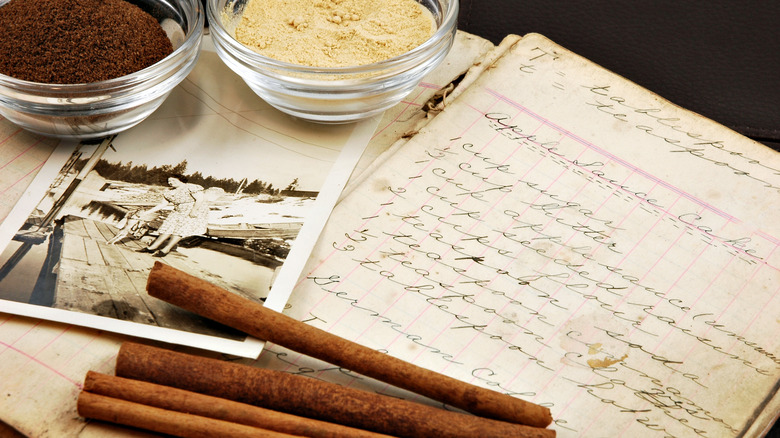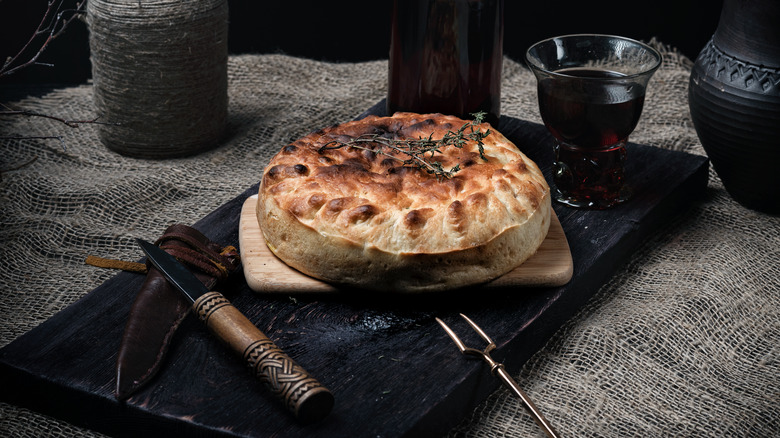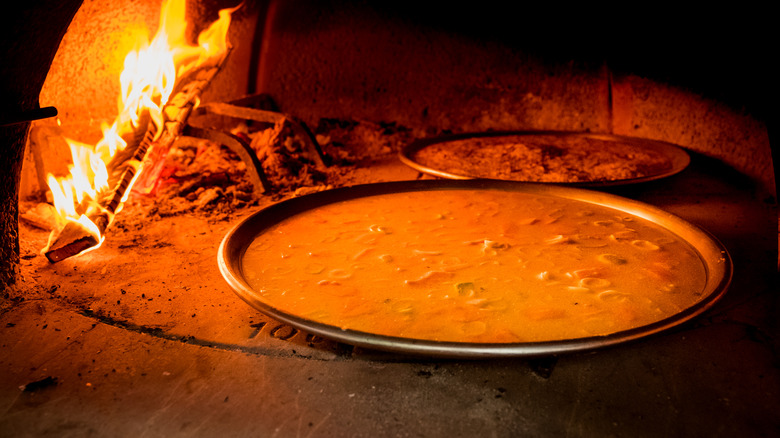The Difficulty Of Adapting Historic Recipes
When Abraham Lincoln was elected to a second term, he celebrated the occasion with an inaugural ball on March 6, 1865. A variety of meats and seafoods, along with a disproportionate selection of cakes, tartes, ice creams, and desserts were served at the event; a closer look by Smithsonian Magazine, which shared the menu, shows the event was catered by a confectioner — with one cake, an "Almond Sponge," standing out for a special reason.
The History News Network says that particular almond cake was a favorite of the president's, and it was created by Kentucky baker Monsieur Giron to celebrate the visit of the Marquis de Lafayette in 1825. The Todds were able to snag the recipe from Giron, and Mary Todd made it for Abraham Lincoln during the early stages of their relationship.
True or not, stories like that can elevate the value of a recipe from a set of ingredients and instructions to a part of historical lore. As it happens, Powell's Books says the recipe now circulating on the internet for Mary Todd Lincoln's 17th-century confection is derived from a cookbook published in 2008, and whose author Donna McCreary carried out extensive historical research on the Lincoln family, per Amazon.
Recipes are often a challenge to adapt
Adapting a recipe written for a 17th-century kitchen for use by a 21st-century home cook is a challenge because the recipes as they appear in diaries and memoirs may simply not be usable. Writer Stephan Schmidt of Manuscript Cookbooks Survey raises the example of author Marie Kimball who wrote "The Martha Washington Cook Book" in 1940; the collection of old recipes are meant to provide insight into the meals Martha and George Washington had enjoyed, but Schmidt notes that Kimbell struggled to turn the purported recipes from the Washingtons' kitchens into something a 1940s cook could understand.
As Schmidt notes, Kimball offered an explanation in her book that "it has been necessary, of course, to make some adaptation" of the centuries-old recipes as they were meant to turn out much larger quantities and as Kimball put it at the time, "some of the recipes are scarcely in accordance with modern taste or practice." To this, Schmidt added his belief that some of the recipes might have even been made up by Kimball herself.
Food historian Aurora Clare explained to Tasting Table that the challenge involved with bringing historical recipes into the 21st century has to do with the understanding of what a recipe was meant to be. "Historically, most people cooked with what's called 'embodied knowledge': They knew how something needed to feel and taste, and didn't necessarily have a list of steps and measurements on hand," she said. As a result, Clare says food historians often find themselves having to "translate" instructions like "cook until it's done" into a language that the modern cook can understand.
Recipes need to be adjusted for methodology, scale, and flavor
According to Aurora Clare, there are several challenges involved in recreating a historical recipe, usually involving methodology, scale, and flavor. "Though written recipes date back to ancient times, our modern idea of a cookbook is rooted in the domestic science movement of the 19th century, and those attempts to standardize domestic labor through written recipes were hardly precise," the food historian and writer explained to Tasting Table.
That lack of precision is most keenly felt when dealing with measurements. "You often see recipes calling for a 'wineglass,' a 'gill,' or other imprecise measurements like quantities of butter the size of an egg, an apricot, or your fist," Clare said, adding, "Attempts are sometimes made, in the spirit of domestic science, to tell you that a 'pinch' actually means something like 1/16 of a teaspoon, but most cooks just meant a pinch, and would be surprised if you tried to quantify it more specifically than that."
Then there is the issue with eggs. As Clare told Tasting Table, "Early cake recipes, for example, call for an astronomical number of eggs, sometimes a dozen or more, because eggs were so much smaller than they are today. These recipes also call for more eggs than we're used to because eggs were the most common raising agent prior to chemical leaveners like baking soda or baking powder."
One celebrity cook who has taken on the modern challenge of adapting historical recipes is Sohla El-Waylly, who recreates ancient recipes by using similar techniques and ingredients on YouTube; and, if anything, the show makes us grateful for modern conveniences.


